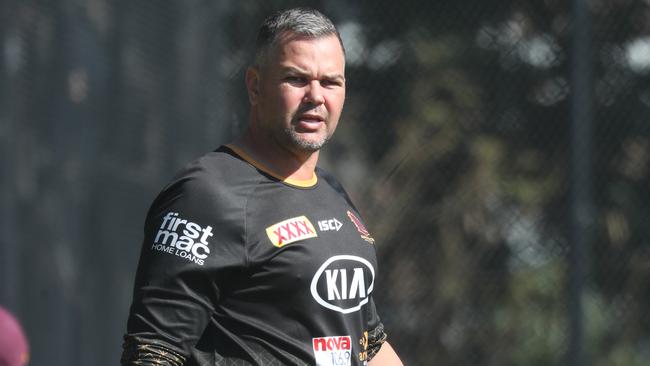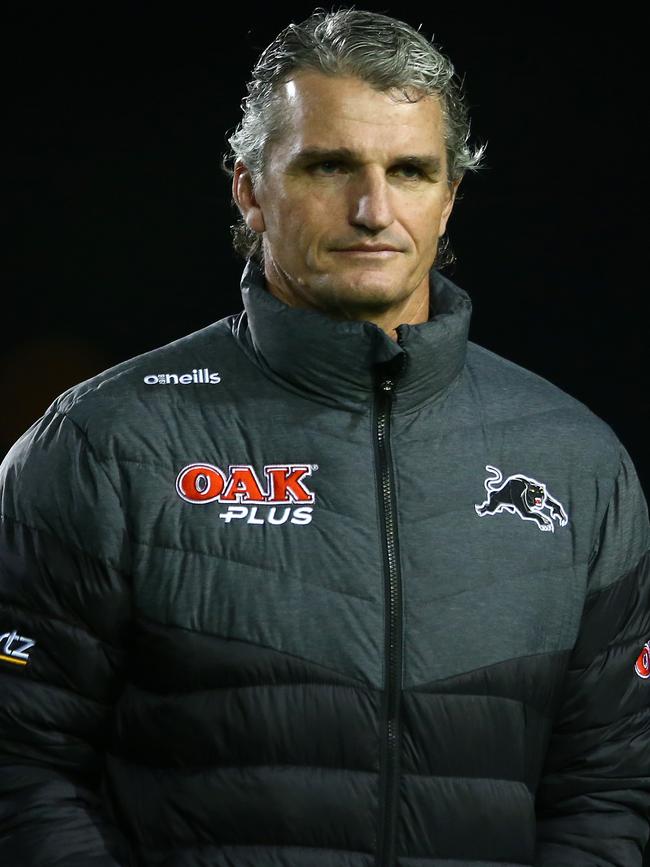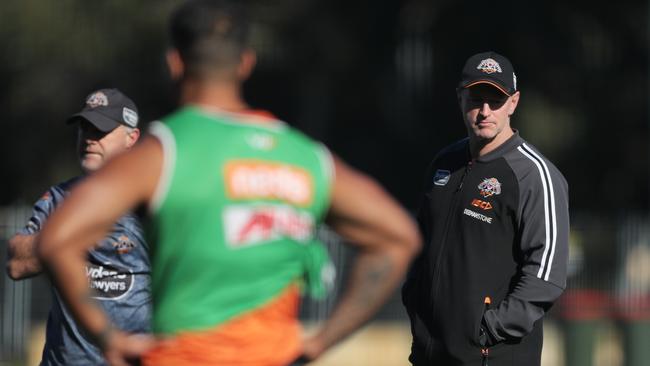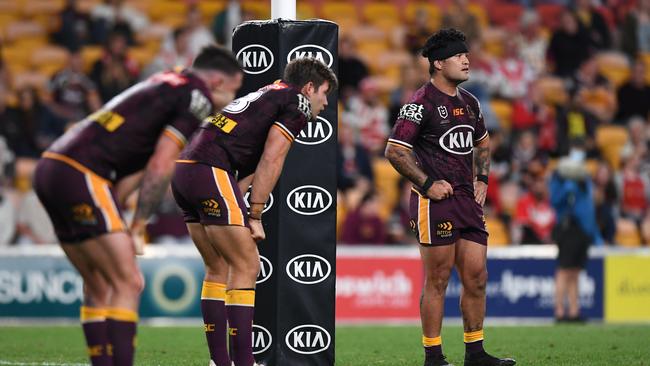Paul Kent: Broncos can learn from different trajectories of Panthers and Wests Tigers
The Broncos, for the first time in the club’s 33 year history, will have to learn the hard way of how to rebuild a roster - and they have two interesting case studies in Wests Tigers and Panthers, PAUL KENT writes.

NRL
Don't miss out on the headlines from NRL. Followed categories will be added to My News.
Penrith and Wests Tigers finished on the same competition points last year and, despite their genetic similarities, have never been so close since.
The Panthers, it has since emerged, were on their way to the top of the ladder. They lead the NRL competition by three points, with five rounds to play, and have strongarmed their way into premiership favouritism.
The Tigers, we now feel kidded to accept, were on their way to purgatory again. They are like a high school kiss; promise and frustration, all at once.
Kayo is your ticket to the 2020 NRL Telstra Premiership. Every game of every round Live & On-Demand with no-ad breaks during play. New to Kayo? Get your 14-day free trial & start streaming instantly >

The Tigers finished 2019 in their traditional position of ninth, on 24 points, and occupy the same postcode again, absolutely refusing to budge.
Penrith were a touch behind on for and against last year but, in the almost 12 months since, have played to their talents so strongly, former skipper Greg Alexander was recently spotted dusting off his old drink vouchers at Panthers in the hopes the premiership drought is set to be busted.
As the buzzards circled Brisbane on Monday in anticipation of coach Anthony Seibold’s resignation, the Broncos could do well to look at the fortunes of both clubs for clues on how to navigate their way out of trouble.

For some years now, the Tigers have promised to break from their teasing ways but the moment a little acid got applied this season, they showed they were still comfortable in mediocrity and rolled over to get their tummies tickled.
They seem quite comfortable not making the finals.
Coach Michael Maguire called a player into his office at a crucial point this season and tried to get an understanding why the player failed to contribute to the gameplay the way the coach preferred, which obviously drew an unsatisfactory response.
Still, Maguire was eager to hear his defence.
“You don’t coach the way I like to play,” admitted the player.
Maguire had two choices at this. He could reach across and slowly throttle the player, simultaneously removing the player from his roster but with the added benefit of also creating considerable salary cap relief, or he could take the more diplomatic approach, which isn’t generally regarded as a strong point.
BRONCOS IN CRISIS
Lose, lose: Broncos’ brutal Seibold ultimatum
Comment: Seibold must quit while he’s behind
Broncos back Walters: ‘We know what Kev can do’
‘I’m sorry’: Pangai Jnr’s plea to save Broncos career
‘He’s a shining light’: Broncos young gun comes of age
“How many finals games have you played?” asked the coach, who finally chose the latter, the jury still out whether it was for the better.
“None,” said the player.
“Well, how about you try it my way.”
Maguire, it doesn’t need to be said, coached the Rabbitohs to their first premiership in 43 years in 2014, coached Wigan to a premiership in the Super League, and is generally considered a change agent coach.
Further out west, Ivan Cleary has had no such troubles this season. The Panthers, with the kind of talent a 4000-strong junior nursery should produce, have finally begun to make good on years of empty promises.

The narrative between the two clubs gains an extra layer, though, when you consider Maguire is handicapped by the salary cap pressures he inherited from previous coach Cleary.
The Tigers have quietly been trying to eliminate Cleary’s mistakes in retention, shopping Josh Reynolds, Russell Packer and Moses Mbye to rival clubs with barely a nibble of interest.
They are trying to improve as a squad even while overcoming their limitations.
There is a lesson in the Tigers and Panthers that could prove invaluable to the Broncos, as they come to terms with the unfamiliar position of 15th. Brisbane have never finished lower than 12th and have missed the finals only five times in 33 seasons.
When Seibold arrived in Brisbane before last season, he had many impressed that, after many years of unchanged success, he was going to reinvent the wheel. The Broncos’ board loved everything it heard.
Many of the more experienced players were soon being moved on to free up salary cap space to sign up the incredible list of rising stars.

Seibold immediately recognised his team was not fit enough but, instead of driving the hard work into them, he took a long term approach that had all the scientists nodding in approval. This was the future of football, went the sell.
Seibold over-committed to the future, though, overlooking that NRL football is a here and now business. Clubs plan for the future only when they have no immediate future.
By the time the Broncos realised their roster had got wildly out of shape, it was too late to pull back. They are committed to a future they never planned on having.
The Panthers are benefiting by maintaining what is the healthiest roster in the NRL but also by years of deliberate roster building that delivered an ideally balanced team list.
The Panthers have the perfect blend of established stars and young, underpaid emerging players. The roster is full of value.
The Tigers are about where the Broncos are, rebuilding a roster still bent out of shape.
It is a lesson the Broncos, for the first time, have to learn the hard way.

